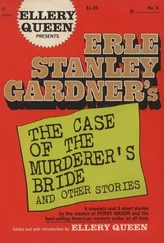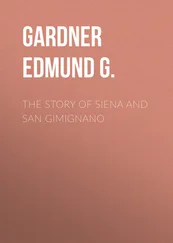Edmund Gardner - The Story of Florence
Здесь есть возможность читать онлайн «Edmund Gardner - The Story of Florence» — ознакомительный отрывок электронной книги совершенно бесплатно, а после прочтения отрывка купить полную версию. В некоторых случаях можно слушать аудио, скачать через торрент в формате fb2 и присутствует краткое содержание. Жанр: История, foreign_antique, foreign_prose, на английском языке. Описание произведения, (предисловие) а так же отзывы посетителей доступны на портале библиотеки ЛибКат.
- Название:The Story of Florence
- Автор:
- Жанр:
- Год:неизвестен
- ISBN:нет данных
- Рейтинг книги:3 / 5. Голосов: 1
-
Избранное:Добавить в избранное
- Отзывы:
-
Ваша оценка:
- 60
- 1
- 2
- 3
- 4
- 5
The Story of Florence: краткое содержание, описание и аннотация
Предлагаем к чтению аннотацию, описание, краткое содержание или предисловие (зависит от того, что написал сам автор книги «The Story of Florence»). Если вы не нашли необходимую информацию о книге — напишите в комментариях, мы постараемся отыскать её.
The Story of Florence — читать онлайн ознакомительный отрывок
Ниже представлен текст книги, разбитый по страницам. Система сохранения места последней прочитанной страницы, позволяет с удобством читать онлайн бесплатно книгу «The Story of Florence», без необходимости каждый раз заново искать на чём Вы остановились. Поставьте закладку, и сможете в любой момент перейти на страницу, на которой закончили чтение.
Интервал:
Закладка:
Edmund G. Gardner
The Story of Florence
PREFACE
THE present volume is intended to supply a popular history of the Florentine Republic, in such a form that it can also be used as a guide-book. It has been my endeavour, while keeping within the necessary limits of this series of Mediæval Towns , to point out briefly the most salient features in the story of Florence, to tell again the tale of those of her streets and buildings, and indicate those of her artistic treasures, which are either most intimately connected with that story or most beautiful in themselves. Those who know best what an intensely fascinating and many-sided history that of Florence has been, who have studied most closely the work and characters of those strange and wonderful personalities who have lived within (and, in the case of the greatest, died without) her walls, will best appreciate my difficulty in compressing even a portion of all this wealth and profusion into the narrow bounds enjoined by the aim and scope of this book. Much has necessarily been curtailed over which it would have been tempting to linger, much inevitably omitted which the historian could not have passed over, nor the compiler of a guide-book failed to mention. In what I have selected for treatment and what omitted, I have usually let myself be guided by the remembrance of my own needs when I first commenced to visit Florence and to study her arts and history.
It is needless to say that the number of books, old and new, is very considerable indeed, to which anyone venturing in these days to write yet another book on Florence must have had recourse, and to whose authors he is bound to be indebted–from the earliest Florentine chroniclers down to the most recent biographers of Lorenzo the Magnificent, of Savonarola, of Michelangelo–from Vasari down to our modern scientific art critics–from Richa and Moreni down to the Misses Horner. My obligations can hardly be acknowledged here in detail; but, to mention a few modern works alone, I am most largely indebted to Capponi's Storia della Repubblica di Firenze , to various writings of Professor Pasquale Villari, and to Mr Armstrong's Lorenzo de' Medici ; to the works of Ruskin and J. A. Symonds, of M. Reymond and Mr Berenson; and, in the domains of topography, to Baedeker's Hand Book . In judging of the merits and the authorship of individual pictures and statues, I have usually given more weight to the results of modern criticism than to the pleasantness of old tradition.
Carlyle's translation of the Inferno and Mr Wicksteed's of the Paradiso are usually quoted.
If this little book should be found helpful in initiating the English-speaking visitor to the City of Flowers into more of the historical atmosphere of Florence and her monuments than guide-books and catalogues can supply, it will amply have fulfilled its object.
E. G. G.Roehampton, May 1900.
CHAPTER I
The People and Commune of Florence
"La bellissima e famosissima figlia di Roma, Fiorenza."
– Dante.BEFORE the imagination of a thirteenth century poet, one of the sweetest singers of the dolce stil novo , there rose a phantasy of a transfigured city, transformed into a capital of Fairyland, with his lady and himself as fairy queen and king:
"Amor, eo chero mea donna in domino,
l'Arno balsamo fino,
le mura di Fiorenza inargentate,
le rughe di cristallo lastricate,
fortezze alte e merlate,
mio fedel fosse ciaschedun Latino." 1 1 "Love, I demand to have my lady in fee, Fine balm let Arno be, The walls of Florence all of silver rear'd, And crystal pavements in the public way; With castles make me fear'd, Till every Latin soul have owned my sway." – Lapo Gianni ( Rossetti ).
But is not the reality even more beautiful than the dreamland Florence of Lapo Gianni's fancy? We stand on the heights of San Miniato, either in front of the Basilica itself or lower down in the Piazzale Michelangelo. Below us, on either bank of the silvery Arno, lies outstretched Dante's "most famous and most beauteous daughter of Rome," once the Queen of Etruria and centre of the most wonderful culture that the world has known since Athens, later the first capital of United Italy, and still, though shorn of much of her former splendour and beauty, one of the loveliest cities of Christendom. Opposite to us, to the north, rises the hill upon which stands Etruscan Fiesole, from which the people of Florence originally came: "that ungrateful and malignant people," Dante once called them, "who of old came down from Fiesole." Behind us stand the fortifications which mark the death of the Republic, thrown up or at least strengthened by Michelangelo in the city's last agony, when she barred her gates and defied the united power of Pope and Emperor to take the State that had once chosen Christ for her king.
"O foster-nurse of man's abandoned glory
Since Athens, its great mother, sunk in splendour;
Thou shadowest forth that mighty shape in story,
As ocean its wrecked fanes, severe yet tender:
The light-invested angel Poesy
Was drawn from the dim world to welcome thee.
"And thou in painting didst transcribe all taught
By loftiest meditations; marble knew
The sculptor's fearless soul–and as he wrought,
The grace of his own power and freedom grew."
Between Fiesole and San Miniato, then, the story of the Florentine Republic may be said to be written.
The beginnings of Florence are lost in cloudy legend, and her early chroniclers on the slenderest foundations have reared for her an unsubstantial, if imposing, fabric of fables–the tales which the women of old Florence, in the Paradiso , told to their house-holds–
"dei Troiani, di Fiesole, e di Roma."
Setting aside the Trojans ("Priam" was mediæval for "Adam," as a modern novelist has remarked), there is no doubt that both Etruscan Fiesole and Imperial Rome united to found the "great city on the banks of the Arno." Fiesole or Faesulae upon its hill was an important Etruscan city, and a place of consequence in the days of the Roman Republic; fallen though it now is, traces of its old greatness remain. Behind the Romanesque cathedral are considerable remains of Etruscan walls and of a Roman theatre. Opposite it to the west we may ascend to enjoy the glorious view from the Convent of the Franciscans, where once the old citadel of Faesulae stood. Faesulae was ever the centre of Italian and democratic discontent against Rome and her Senate ( sempre ribelli di Roma , says Villani of its inhabitants); and it was here, in October b. c. 62, that Caius Manlius planted the Eagle of revolt–an eagle which Marius had borne in the war against the Cimbri–and thus commenced the Catilinarian war, which resulted in the annihilation of Catiline's army near Pistoia.
This, according to Villani, was the origin of Florence. According to him, Fiesole, after enduring the stupendous siege, was forced to surrender to the Romans under Julius Cæsar, and utterly razed to the ground. In the second sphere of Paradise, Justinian reminds Dante of how the Roman Eagle "seemed bitter to that hill beneath which thou wast born." Then, in order that Fiesole might never raise its head again, the Senate ordained that the greatest lords of Rome, who had been at the siege, should join with Cæsar in building a new city on the banks of the Arno. Florence, thus founded by Cæsar, was populated by the noblest citizens of Rome, who received into their number those of the inhabitants of fallen Fiesole who wished to live there. "Note then," says the old chronicler, "that it is not wonderful that the Florentines are always at war and in dissensions among themselves, being drawn and born from two peoples, so contrary and hostile and diverse in habits, as were the noble and virtuous Romans, and the savage and contentious folk of Fiesole." Dante similarly, in Canto XV. of the Inferno , ascribes the injustice of the Florentines towards himself to this mingling of the people of Fiesole with the true Roman nobility (with special reference, however, to the union of Florence with conquered Fiesole in the twelfth century):–
Читать дальшеИнтервал:
Закладка:
Похожие книги на «The Story of Florence»
Представляем Вашему вниманию похожие книги на «The Story of Florence» списком для выбора. Мы отобрали схожую по названию и смыслу литературу в надежде предоставить читателям больше вариантов отыскать новые, интересные, ещё непрочитанные произведения.
Обсуждение, отзывы о книге «The Story of Florence» и просто собственные мнения читателей. Оставьте ваши комментарии, напишите, что Вы думаете о произведении, его смысле или главных героях. Укажите что конкретно понравилось, а что нет, и почему Вы так считаете.












